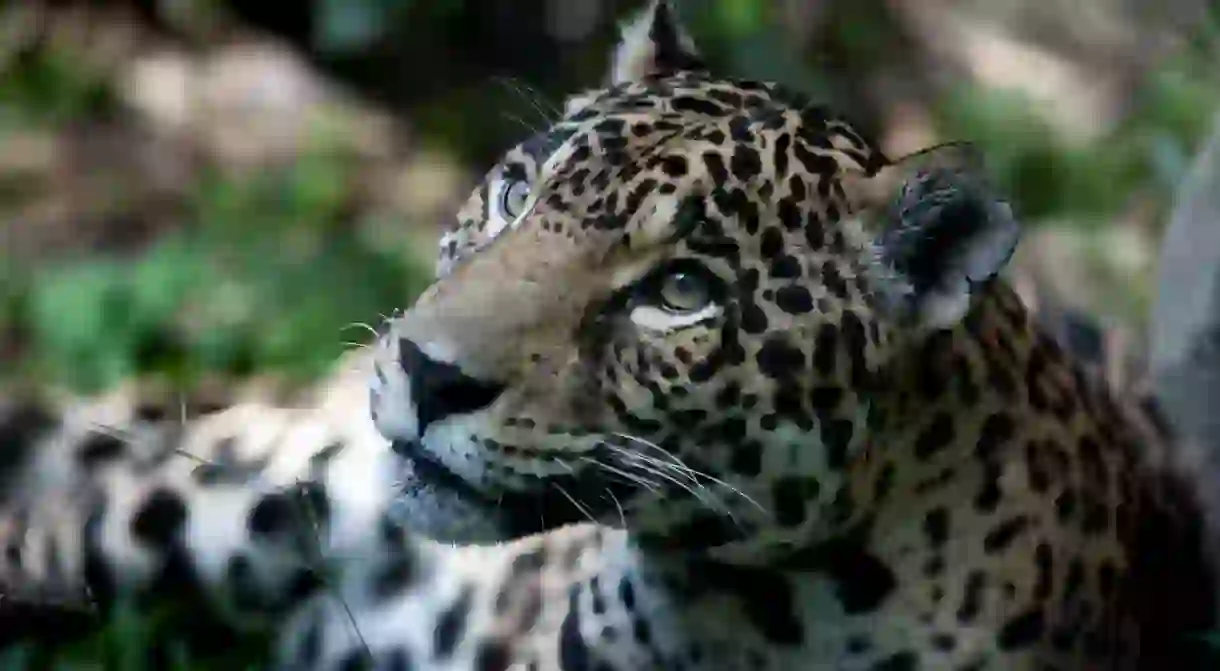Where to Find Incredible Native Animals in Peru

To many, Peru conjures up images of poncho-wearing natives and the stunning high-altitude ruins of the formidable Inca empire. Yet this wild nation is brimming with pristine nature reserves, home to hundreds of fascinating species of fauna throughout its various climatic zones. From the Pacific coast to the Andes and the Amazon, here is where to find some of the most awe-inspiring native Peruvian wildlife.
The Andean Condor
As one of the largest flying birds on earth, the enormous Andean Condor is a symbol of the region and has played a central role in Andean mythology for millennia. With a wingspan of up to 10 feet (three meters), it’s no surprise these impressive flying beasts are the most photographed bird in the country.
Where to go: Colca canyon is the best spot, with the mammoth birds flying within feet of onlookers as they seek out warm updrafts to soar high into the sky. Trekkers exploring the epic Huascarán National Park are likely to catch a glimpse too.
Mirador Cruz del Cóndor, Arequipa, Peru
Parque Nacional Huascarán, Áncash, Peru

The Andean Cock-of-the-Rock
The comparatively minuscule Andean Cock-of-the-Rock puts on one hell of a show during mating season when it puffs out its bright orange feathers in hope of finding a lover, a spectacle cherished by bird-watchers and everyday tourists alike.
Where to go: The Andean cloud forests of the Manu Biosphere Reserve is the best place to spot this little guy. With a bit of luck, however, trekkers on the Inca Trail might also stumble upon this colorful creature.
Parque Nacional del Manu, Madre de Dios, Peru
Inca Trail, Aguas Calientes, Peru

The Macaw
Forest
The Humboldt Penguin
Where to go: The Ballestas Islands just south of Lima are the only place to spot the Humboldt Penguin in Peru. Expect to see plenty of pelicans and sea lions as well.
The Puma
Where to go: A smattering still roam the Andean highlands, although nature reserves such as Tambopata provide the best chance of seeing one in the wild. Always on the move, the Puma has even been spotted as far south as Patagonia.
The Jaguar
Park
Where to go: The Manu Biosphere Reserve provides the best opportunity in Peru. Just don’t get your hopes up.
Amazon River Dolphin

The Peruvian Hairless Dog
Where to go: These unique animals can be found wondering around ancient sites on the Pacific coast such as Chan Chan.
The Caiman
Commonly found throughout the swamps and rivers of the Amazon, these mean looking creatures spend their days basking in the sun and their nights hunting for food. If not poached by humans, they can survive up to 40 years in the wild.
Where to go: The Tambopata National Reserve is great for spotting caiman, best done at night when their eyes reflect torchlight like thousands of twinkling stars.

Piranhas

Where to go: Piranha fishing is particularly popular on riverboat tours leaving from Iquitos.
Llamas and alpacas
Where to go: It would be nigh on impossible to visit to Andes without running into these guys. Planning on visiting neighboring Bolivia? There are plenty of amazing animals to admire there too.













